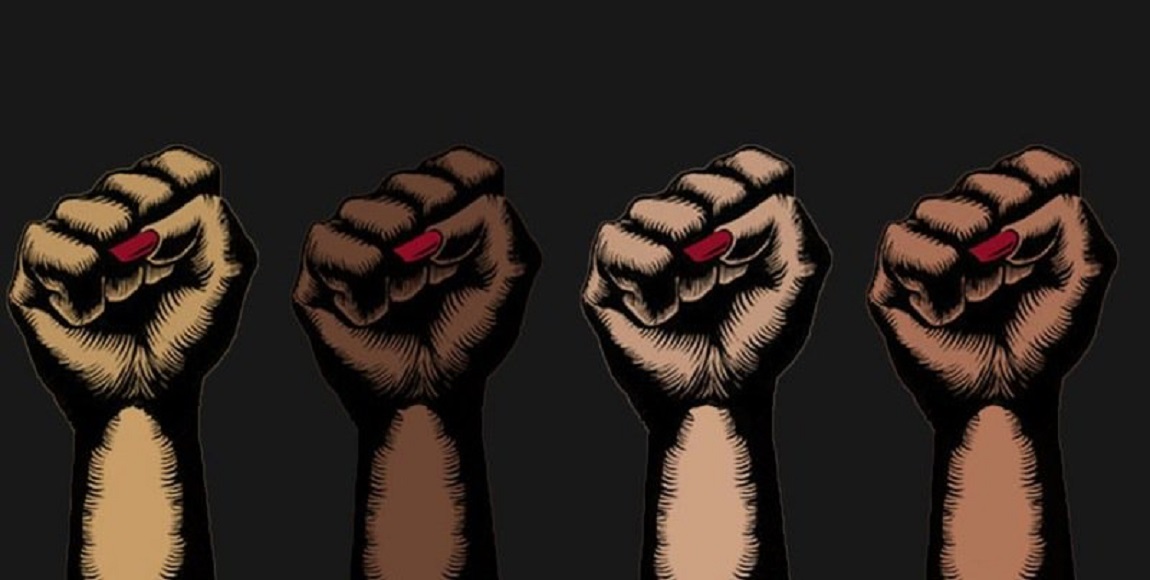Women around the world are forced everyday to live in patriarchal societies, under the rules of an oppressive patriarchy. However, there are some places in the world where women are in charge. Even before Beyonce made the song about girls who run the world, these women have been doing the work. In this week’s #FanGirlFriday, SHAAZIA EBRAHIM and FATIMA MOOSA round up seven of these women-led societies.
Before we get into this week’s #FanGirlFriday, here’s a quick crash course about the difference between matriarchal and matrilineal. A matriarchal society is one in which a family, group or state is governed by a matriarch (a woman who is head of a family or tribe). A matrilineal society means to trace one’s lineage through maternal ancestry and refers to a civil system in which one inherits property through the women line. Now you know, let’s get into it.
The Jeju Haenyeo of South Korea
On Jeju Island in South Korea, there exists a community of women divers or Haenyeo. The Haenyeo dive up to 10m under the sea (without the aid of oxygen masks!) to gather shellfish, like abalone, conch or sea urchins for a living. A centuries old tradition trains the Haenyeo to dive from their teens and some women continue to dive well into their 80s. The tradition is passed on to younger generations. The mermaids of Jeju – as they are sometimes known – have a vast knowledge of sea and marine life and harvest shellfish for up to seven hours a day, 90 days of the year. Holding their breath for just one minute for every dive, they are known for making a unique verbal sound when resurfacing. Before a dive, the Haenyo are said to pray to the goddess of the sea Jamsugut for safety and an abundant catch.
The significance of the living that the Haenyo contributed to families created a semi-matriarchal society in Jeju with the Haenyeo at the head of the household. This flipped gender norms: men took care of children and did shopping while women earned the income. However, Confucian principles dictate that men fill political leadership roles, perform ancestor-worship ceremonies, and inherit property and the familial line so the elements of matriarchy is confined to the domestic sphere.
Dahomey Amazon warriors of Benin
These warriors were the in-real-life Dora Milaje. They might not exist anymore but when they did these women were the most badass people around. They were an all-women military unity who existed within the Dahomey Kingdom which could be found in modern-day Benin. They might not have existed as a society per say but they are the only documented all female military unit in modern history. And while we really don’t like invasions and conquering of lands, the warriors helped their kingdom to grow to extraordinary heights.
They were technically under the rule of the king but they managed to make a name for themselves around the world for their fighting prowess. They also fought against French colonisers who tried to invade the kingdom. They were eventually overwhelmed by the guns and might of the French.
The Mosuo of China
An anachronistic matriarchy exists in Yunnan, south-west China, in the far eastern foothills of the Himalayas in an ancient tribal community of Tibetan Buddhists called the Mosuo.
The Mosuo live in large extended family households headed by a matriarch. Property is passed along the matriline and lineage is also traced along the same matriline. In society, Mosuo men typically handle politics while women handle business decisions. Children take their mother’s last name and are raised in the mother’s households.
There is no such thing as the institution of marriage in the Mosuo society. Instead, they have what’s called “walking marriages”. Women pick their partners by strolling into the man’s home and couples never live together. Fathers play little or no role in the upbringing of the children and in some instances the fathers identity is unknown. Children remain entirely in the mother’s care. For some men, the only child-rearing responsibilities are those within his own matrilineal household.
The Umoja of Kenya
While the Western world seems to love portraying Africa as a very gender unequal place, in fact Africa has many societies in which the women rule. One such is the Umoja village in Kenya where men are literally banned from the place. It is also a safe haven for women who are survivors of sexual abuse and violence. The village was started in 1990 by 15 women were were survivors of rape by British soldiers. In this community, the women live in a supportive community where they are free from child marriages, sexual abuse, and female genital mutilation. Speaking to a Guardian reporter, one of the women said: “We don’t have much, but in Umoja I have everything I need.”
The Minangkabau of Indonesia
The Minangkabau is the world’s largest matrilineal society which can be found in Indonesia. In this society, inheritance moves from mother to daughter. Men move into women’s houses when they marry and decisions within the household require an equal consensus between the men and women. Mothers are also regarded as the most important people in the society. The matrilineal traditions in the village are guided by the adat (customs) of the Hindu belief system of Minangkabau. While the society might not be entirely equal, the type of equality that this village espouses does make it unique.
The Akan of Ghana
This society is built around a system called matriclan in which all of the leaders of the clan are women. Even though men sometimes take up leadership positions in the society, inheritance is passed down from mother to daughter. Additionally, social and economic institutions like ownership of property is based on blood affiliation to the matrilineage.
In the Ashanti Kingdom, which is part of the Akan people in southern Ghana and the Ivory Coast, Queen Mothers known as Asantehemaa, play an important role in local governments. The last matriarch leader of the society died last year in Ghana.
The Garo of north-eastern India and Bangladesh
The Tibeto-Burman-speaking Garos are found in north-eastern parts of India and some parts of Bangladesh. Property and political succession is passed from mother to daughter where the youngest daughter typically inherits her mother’s property. The society is matrilineal but not matriarchal so the men govern the society and manage property.
The youngest daughter’s marriage is often arranged. But for non-inheriting daughters, the Garo have a tradition where the groom-to-be is expected to run away from his marriage proposal, and the bride-to-be’s family is to “capture” him and return him to his potential bride’s village. The back-and-forth is repeated until the bride either gives up, or the groom accepts her proposal (she often then has to promise to serve and obey him though). But once they’re married, the husband lives in his wife’s house. If the marriage doesn’t work out it is simply dissolved – no fuss, no social stigma – because it isn’t considered a binding contract.









